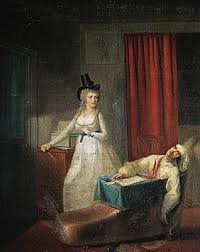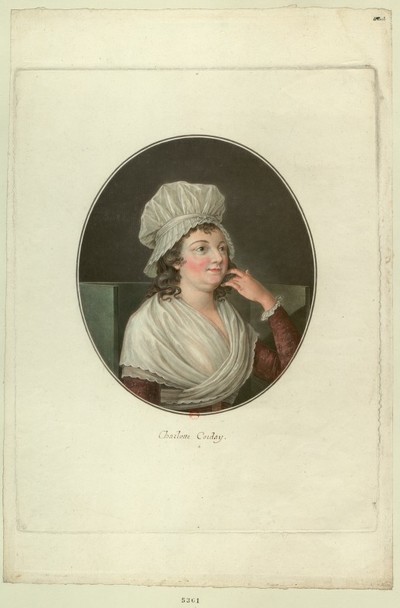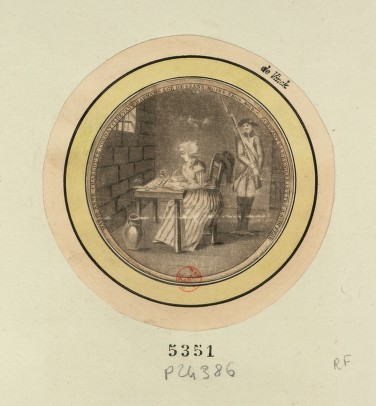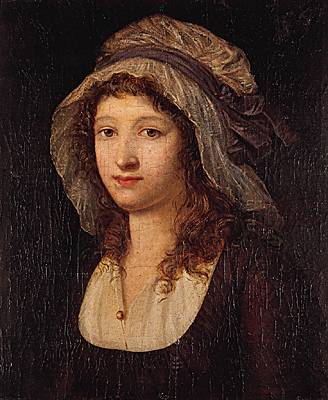|
Charlotte Corday died at the guillotine in July 1793, a few weeks after Manon Roland’s arrest, and a few days after Olympe’s. Charlotte had come down from her native Vendee, in the north west of France, just below Britanny, to murder Jean-Paul Marat, the ‘friend of the people’ and leader, with Robespierre, of the Terror. She was an aristocrat, who left to her own devices, had ‘read everything’ in her parents’ library. She was a republican, who wanted to save the republic by ridding it of Marat, and not, as the English believed at the time, a royalist. She came to Paris, rang Marat’s door bell, was admitted to his bathroom where he was writing in the tub, to relieve a skin irritation, and she stabbed him. She was arrested immediately and tried very publically. A few days later she died. When we talk about women who were important actors in some historical event or other, very often there is a focus on what they looked like, in particular, whether they were pretty or not. (This, of course, does not simply apply to political women from the past but is still very much in force!) What's interesting about Corday's case, is that descriptions and portraits of her after she was caught are very different from earlier descriptions or portraits. Before the murder, Charlotte Corday was described as pretty, beautiful even, by all who saw her. Even Chabot, the Montagnard who thought her a horrifying accident of nature, and fancied he could detect plainly her criminal propensities painted on her face, still described her as having ‘spirit, grace, superb height and bearing,’ But the death of Marat changed the way she was perceived. Fabre d’Eglantine, actor and Danton’s private secretary, captured this reversal in his ‘Moral and physical portrait’ of Corday for the daily newspaper Le Moniteur Universel. “This woman who has been called very beautiful was not beautiful. […] she was a virago, fleshy and not fresh, without grace, dirty, as are nearly all female philosophers and blue stockings. Her face was covered in red patches, and featureless. Height and Youth are proof indeed! That is all it takes to be beautiful while on trial. Moreover this observation would not be needed if it were not for the general truth that any woman who is beautiful and knows it cares for life and fears death.”
1 Comment
9/15/2017 11:18:42 pm
The Renaissance Era is highly regarded as the time wherein arts and culture is at peak. This unique period has produced stunning products in which the public enjoys today. However, the accuracy to depict someone or something is underdeveloped during that time. One of it is portraying women. It can't be helped as individuals of that time are thought of ideologies which made them close-minded. That is why we need to break the stigma and reroute a new phase in the 21st century.
Reply
Leave a Reply. |
About
This is where I live blog about my new book project, an intellectual biography of three French Revolutionary women philosophers. Categories
All
Archives
November 2022
|




 RSS Feed
RSS Feed